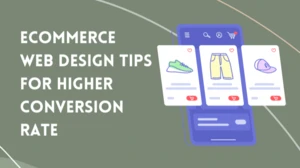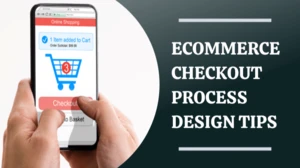8 Best Ways to Improve Ecommerce Marketing Automation
Running an ecommerce business comes with a whole bunch of tasks in the bucket. And as the business grows, so does the complexity of those tasks.
Imagine a situation during a holiday sale when hundreds of customers are browsing your site at one time, and you have to respond to each customer interaction, schedule every message, and track their behaviour all at once. Doing those manually will definitely be overwhelming and inefficient.
Here's when marketing automation steps in not only as a time-saver but as a powerful way of personalisation.
What is ecommerce marketing automation?
By ecommerce marketing automation, we understand it as the use of software and technology to automatically manage and execute marketing tasks and workflows across your online store.
This includes everything from personalised emails to retargeting visitors to managing customer journeys to tracking user behaviour, all with no manual intervention. The key purpose is actually to deliver the right message to the right customer at the right time.
What are the benefits of ecommerce marketing automation?
Implementing marketing automation in ecommerce comes with a wide range of benefits.
Here are some:
- You can segment customers based on their behaviour, purchase history and demographics.
- You can set up automated reminders for the users.
- You can recommend products based on the customer's interest.
- You can use behaviour-based triggers to deliver timely and relevant content.
- You can track campaign performance, customer behaviour, and revenue impact.
8 strategies to improve ecommerce marketing automation

1. Create a welcome email series
If your target is to have a higher open and engagement rate, ensure a well-designed welcome series. It will be the first point of contact you can have between your brand and a new subscriber. You can easily turn your prospects into active customers through call-to-action, personalised product highlights and introductory offers.
As an example, in the welcome email series, you can include:
Email 1 for an instant greeting that you will be sent immediately after sign-up. In Email 2, you can share the brand story and send it a day or two later. Later, in Emails 3 and 4, you can showcase popular products and social proof to build trust and credibility. Then send a reminder to use the new customer offer via Email 5.
2. Send out abandoned cart reminders
Abandoned cart is one of the common challenges in ecommerce. And to avoid the consequences of such an act, you can send out automated abandoned cart reminders to recover lost revenue by reengaging the potential buyers. It is a great strategy to bring your store and its selected items back to their attention at just the right time.
The flow can include a friendly reminder email using just the previously selected product email with a clear call-to-action like Complete Your Order. Then you can send out an email about offers and discounts to create urgency and encourage completion. To make the process easier, add a clear checkout link with product images and details. Personalise the message with the customer's name and cart contents as well.
3. Set up customer loyalty programs

In today's competitive ecommerce market, attracting new customers is not enough; you have to keep them coming back. By arranging an automated customer loyalty program, you can reward repeat customers to build long-term relationships.
In the loyalty program, you can add a point-based system where customers earn points against every dollar spent. The points can later be redeemed for discounts or freebies. Also, you can offer tiered rewards to unlock more benefits. Provide referral incentives as well for those who bring new customers.
When you add automation to these programs, you can track points and purchases in real time with no manual effort. You can easily send automated reward notifications or deliver personalised offers to repeat customers.
4. Track post-purchase experience
The customer journey doesn't just end at the checkout; you must track the post-purchase experience to improve customer satisfaction. Some of the key automated actions to track the post-purchase journey include sending an order confirmation email immediately alongside real-time shipping notifications.
To show more appreciation, send an automated thank-you email alongside suggestions for related products. Once the product has been delivered, request the clients to leave a review or feedback.
If the products are complex to use and for high-ticket items, send usage tips, videos or tutorials to make sure the users use the product correctly. In case any of the clients face any issue, you can automate a follow-up email to check whether the problem has been resolved.
5. Implement automated chatbots
Today's customers expect immediate assistance. Hence, the use of automated chatbots has significantly increased to provide real-time support, answer common queries and guide users. Chatbots can easily handle common questions regarding shipping, return policies, stock availability, payment processes and more.
They can also ask customers about the products they are looking for to recommend products. If the users add something to the cart but take time to check out, the chatbot can pop up with a reminder or ask if any help is needed. They also work great at gathering email addresses, preferences, and other data in a friendly way.
When automating a chatbot, you have to make sure that you are using clear and friendly language that reflects your brand's tone. For open-ended questions, offer clickable options.
6. Retarget your predictive audiences

Predictive audiences are those who are most likely to perform a specific action, like buying a product or becoming repeat buyers. Use ecommerce automation tool to analyse, trigger and deliver the messages to the right people. You can understand user behaviour based on page views, add-to-cart and purchases.
Once you have successfully identified the predictive audiences, send a personalised email to those who have a high intent. You can even automate A/B testing and optimisation as well to see which variation drives more engagement or conversion.
7. Upsell and cross-sell effectively
You can use automation in up-selling and cross-selling in many ways. When a buyer adds a product to their cart, use automated pop-ups to offer upgrades and bundles at a discounted price with messages like Buy two more to get a 25% discount.
Use automation when recommending related or higher-end products based on user behaviour as well. Once the customer completes the purchase, trigger them with an automated email sequence suggesting an extended warranty and recommending more items.
8. Make your checkout process smoother
It is one of the top reasons why customers abandon their carts. You can use auto-fill and smart forms to streamline checkout. The automated form will remember customer information with permission and fill in the shipping address, payment details and other contact info, skipping manual entry.
You can also include one-click checkout, which allows customers to pay with stored methods instantly and skip multi-step checkouts. In case any of the customers leaves the checkout page, the automation tool can trigger a real-time reminder pop-up or send an SMS.
Automation can also be used in payment methods, currency and delivery options to improve trust and reduce confusion.
Final words
One thing is clear: marketing automation is no longer just a nice-to-have, but rather a game changer. From welcoming new customers to retargeting high-intent shoppers, automation can help your ecommerce business in many ways. So, implement the mentioned strategies to improve your marketing automation and see whether it works or not.



![How to Start an Ecommerce Business in Australia [2023 Guide]](/template/5731a701/images/resource-blog-right-img1.png)





